
Kale is in the cabbage family and comes in green or purple headless leaves. Other colour variations may consist of whites, yellows, blues and reds. The vegetable has a mild earthy flavor and can become even more pronounced after being frozen or exposed to frost. The plant also grows very well in wintry and harsh climates making it very versatile as far as cultivation is concerned. Vegetables in the same family as kale are broccoli, cauliflower, cabbage, kohlrabi, rapini, collard greens and brussel sprouts. Kale is viewed as a superfood with many healing qualities. One interesting characteristic about kale is that you can harvest the outer leaves as you need them without harming the plant or the future growth of more inner leaves. Kale is very simple to grow and is a great addition to any vegetable patch. The tender young kale leaves are best for salads while the mature leaves are best for cooking. The best way to prepare kale is to steam, stir-fry or eat it raw.
Kale stands out as a power vegetable because of the incredible amount of nutrition packed into each curly dark green leaf. Kale is a great raw food as it is high in fiber, rich in beta carotene, vitamins A, C, E, and K, lutein, calcium, iron, magnesium and potassium as well as other important nutrients. It is these facets of kale that are known to prevent and fight against such medical issues as cancer, cataracts, emphysema and rheumatoid arthritis. A regular serving of kale is 1 cup and contains 40-60 calories, making it a great weight loss aid. Due to the overwhelming amount of antioxidants, compounds, minerals and nutrients, kale is also successful in preventing colds, improving skin tone and augmenting energy levels.
Kale is an excellent food to add to your diet. Recipes are rarely complicated and the food is so flexible it can be used in smoothies, soups, salads and even as a part of a main dish. Eating kale raw will only increase its potential in aiding a healthy body. Wash your kale leaves well. The curls in the leaf tend to hid dirt, sand and maybe some bugs.
Try these kale recipes to get you started working with kale in your kitchen:
Kale Smoothie
2 cups water
4 bananas
3 yellow mangoes
1 cup of raspberries
1 cup of red grapes
6-8 kale leafs
A few mint leafs
BLEND ingredients well.
Kale Soup
1 Bunch of Kale leaves
¼ Avocado
¼ Lemon (peeled)
1 Roma Tomato
2 Cloves Garlic
2 cups water (lukewarm)
A sprinkle of red pepper flakes
Salt, Pepper and Onion Power to taste
BLEND all the ingredients in the warm water to get your desired consistency.
For more articles go to http://lifesportfitness.lifestyleezine.com

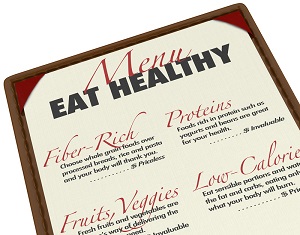 Just because you are watching what you eat and trying to drop unwanted pounds doesn’t mean you can’t enjoy eating out and socializing with friends and family on occasion. It actually may be getting a little easier to eat out while trying to eat cleaner, as some restaurants are adding special menu items that are lower in fat and salt, low calorie or lower in grain-based carbs.
Just because you are watching what you eat and trying to drop unwanted pounds doesn’t mean you can’t enjoy eating out and socializing with friends and family on occasion. It actually may be getting a little easier to eat out while trying to eat cleaner, as some restaurants are adding special menu items that are lower in fat and salt, low calorie or lower in grain-based carbs.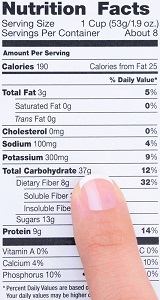 Are food labels really telling us the truth? Can we actually understand what they are saying? Although ingredient lists on food products are supposed to inform us, the consumers, about what’s contained in the product, this is sometimes not the case.Companies are able to mislead consumers by advertising healthier foods when actually their products contain completely different amounts of vitamins, carbohydrates, sugar, protein, fat – both saturated and unsaturated, sodium, cholesterol and various other ingredients. Ignore the hype on the front of the packaging; ignore how attractive the packaging may be. This is just to distract the consumer into buying the product. There are a couple of things to consider when looking at the nutrition label.
Are food labels really telling us the truth? Can we actually understand what they are saying? Although ingredient lists on food products are supposed to inform us, the consumers, about what’s contained in the product, this is sometimes not the case.Companies are able to mislead consumers by advertising healthier foods when actually their products contain completely different amounts of vitamins, carbohydrates, sugar, protein, fat – both saturated and unsaturated, sodium, cholesterol and various other ingredients. Ignore the hype on the front of the packaging; ignore how attractive the packaging may be. This is just to distract the consumer into buying the product. There are a couple of things to consider when looking at the nutrition label.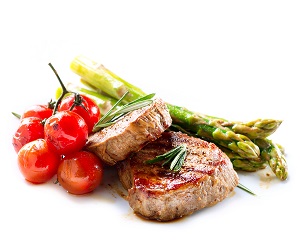 There is a lot of research that educates us on how to be fit and healthy as well as offer information on what to eat and what to avoid. Usually we end up with regurgitated material that inevitably says to eat more fruit and veggies and lay off the high caloric, high fat snacks. By now, this should be common knowledge but the newest rage is food combination tricks which can help with weight loss, improved health and better digestion.Why We Need Better Digestion
There is a lot of research that educates us on how to be fit and healthy as well as offer information on what to eat and what to avoid. Usually we end up with regurgitated material that inevitably says to eat more fruit and veggies and lay off the high caloric, high fat snacks. By now, this should be common knowledge but the newest rage is food combination tricks which can help with weight loss, improved health and better digestion.Why We Need Better Digestion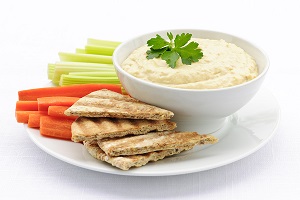 Making your own healthy snack is a great way to avoid the unhealthy snacks high in saturated fats, sugar and food preservatives or additives. Choosing a healthy snack is a great way for the body to maintain its energy levels in between meals. The key to making healthy snacks is to make them the same day, or no sooner than the night before for optimum freshness.
Making your own healthy snack is a great way to avoid the unhealthy snacks high in saturated fats, sugar and food preservatives or additives. Choosing a healthy snack is a great way for the body to maintain its energy levels in between meals. The key to making healthy snacks is to make them the same day, or no sooner than the night before for optimum freshness.  We all know that exercise is important, so why do so many of us make excuses not to do it? Exercise and healthy eating will not only make us feel better immediately but it can also extend our lives. It’s time we stop making excuses and start getting fit. Here we’ll learn ways to combat the most common exercise excuses.No Time
We all know that exercise is important, so why do so many of us make excuses not to do it? Exercise and healthy eating will not only make us feel better immediately but it can also extend our lives. It’s time we stop making excuses and start getting fit. Here we’ll learn ways to combat the most common exercise excuses.No Time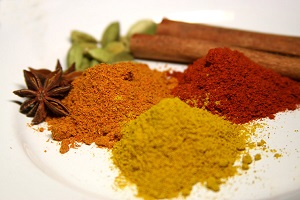 Healthy eating doesn’t have to be boring or bland. You just need to get familiar with the vast selection of herbs and spices available to you!
Healthy eating doesn’t have to be boring or bland. You just need to get familiar with the vast selection of herbs and spices available to you! Perhaps one of the more interesting things I have seen relating to dietary research is how diets change as a person gets older, specifically women. In this article I am going to take a little look at a few of these differences, and perhaps give some sort of indication as to why our diet may change as we age. The age to diet correlation that I am going to be discussing here stems from a recent study which looked at around 2,000 women of a variety of ages. Now, there has been no study related to males in the same vein, however, it could be argued here that these results could potentially apply to males as well.
Perhaps one of the more interesting things I have seen relating to dietary research is how diets change as a person gets older, specifically women. In this article I am going to take a little look at a few of these differences, and perhaps give some sort of indication as to why our diet may change as we age. The age to diet correlation that I am going to be discussing here stems from a recent study which looked at around 2,000 women of a variety of ages. Now, there has been no study related to males in the same vein, however, it could be argued here that these results could potentially apply to males as well.  Fat loss is on the top of many people’s lists these days. People will try all sorts of weight loss programs only to be disappointed with the results. Trend diets may give quick results but they are not a long term solution to weight loss. Still the most effective way to successful weight loss is eating a well balanced diet including a healthy breakfast. It’s true when they say breakfast is the most important meal of the day and here are the reasons why.
Fat loss is on the top of many people’s lists these days. People will try all sorts of weight loss programs only to be disappointed with the results. Trend diets may give quick results but they are not a long term solution to weight loss. Still the most effective way to successful weight loss is eating a well balanced diet including a healthy breakfast. It’s true when they say breakfast is the most important meal of the day and here are the reasons why.